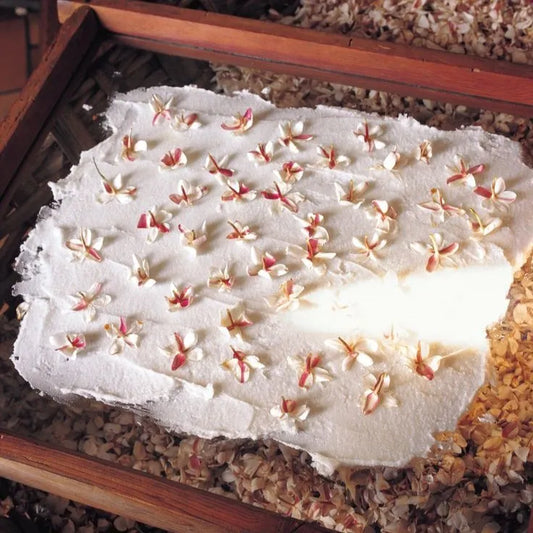Essential oil blends are combinations of oils selected by their companies of origin to accomplish a specific goal for the customer. These are meant to save customers time and money, bringing together as many as a dozen different oils in one half-ounce bottle—a feat that customers could only accomplish on their own by purchasing all those oils separately and mixing them together themselves.
Let’s take an example: Revive Essential Oils’ highly regarded “Sleep” blend contains geranium, ho wood, coriander seed, lavender, Roman chamomile, lemongrass, lemon peel, ylang-ylang, jasmine, and rose essential oils and, as of this writing, sells for $15.00 for a 10 mL bottle. Should the customer choose to purchase all these oils separately from Revive and mix a similar blend by hand, the oils would cost a staggering $166.50, making the blend a more economical buy if getting a better night’s sleep is the ultimate goal. Granted, they could mix this blend many times over by purchasing all the oils, but the blend becomes the safer bet to see if it works before spending all that money.
Commercially available blends also have the advantage of being mixed by experts in a laboratory, so they have been balanced properly to maximize the scent and avoid clashes between incompatible fragrances. This is not necessarily true of essential oil blend recipes that you may find in books or online, written by users without the extensive experience or resources of olfactory professionals.
If you would like to mix your own oils to create blends, it helps to have an understanding of which oils mix well together and which are likely to overpower one another or, worse yet, just smell bad when combined.
Essential oils fall into eight general categories (also referred to as families): citrus, floral, herbal, camphor, mint, spice, resin, and wood. Blends usually contain a cross section of oils from three of these categories, so the resulting scent is not overpoweringly from one category or another. A blend of orange (citrus), nutmeg (spice), and pine (wood), for example, might provide a surprisingly fresh and uplifting combination when diffused, while a blend of jasmine (floral), lemon (citrus), and myrrh (resin) may have the ability to create a relaxed, comfortable sensibility. The choices are endless and entirely up to the user, based on their own favorite fragrances among the many available.
The question of whether blends are more effective than single essential oils has intrigued some scientists in recent years, leading to a handful of studies on their effects on various viruses and other pathogens in laboratory settings. One such study (Wu et al., 2010) found that a doTerra essential oil blend called On Guard, containing wild orange peel, clove bud, cinnamon leaf and bark, eucalyptus, and rosemary essential oils, “significantly attenuated” the influenza virus PR8 in a test tube. A randomized, double-blind clinical trial (Ou et al., 2012) involving 48 patients with menstrual cramps tested an essential oil blend of lavender, clary sage, and marjoram in a massage cream for its effectiveness in relieving the cramps and found that the cream with oils provided more relief than a cream that contained no essential oils.
Two studies involving animals showed some promise for the potential power of essential oil blends. In a study (Upadhyay et al., 2019), 800 one-day-old broiler chickens became the subjects of an experiment. They were fed a commercial feed product with a blend of eucalyptus and peppermint essential oils in it, to prevent intestinal lesions, weight loss, and other side effects of a vaccine for coccidiosis, a parasitic infection common in chickens. The chicks that ate the feed with the essential oil blend showed an increase in body weight and fewer intestinal lesions, especially when the feed also contained supplemental vitamin D3. This may have little impact on human use of blends containing peppermint and eucalyptus, but it’s good news for chicken ranchers supplying broilers to supermarkets.
In the second study, researchers looking for an alternative to antibiotics for livestock tested 90 weaned piglets on one of three diets: a control diet without antibiotics, a diet with antibiotics, and a diet with a blend of essential oils. They found that piglets that received essential oils grew at similar rates to the piglets that received antibiotics, and both had less diarrhea than the pigs in the control group. They concluded that supplementing the pigs’ diet with essential oils could be just as effective as antibiotics, because it increased the antioxidative activity in the pigs’ digestive system. This does not mean that essential oils can be substituted for antibiotics in humans, however, as we can draw no conclusions about the oils’ ability to fight and kill bacteria in the human body from this study, as this was not its objective.
Much more research will be required before we can make a definitive statement that essential oil blends are more effective than single oils in any medical situation. What we do know is that a diffusion of an essential oil blend provides pleasant scents that may have the ability to improve mood and encourage relaxation.





